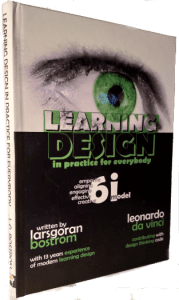![]() Listen to the story
Listen to the story
Individuals have to stay relevant and compete with both the Digital native Gen Z population and machines/software robots that are becoming prevalent in workplaces. In the digital world, staying relevant only based on your past education and experience is no longer an option. Successful individuals in this digital economy are those who not only learn new technical and professional skills but those who have the right attitude and mindset to learn. In other words, these are agile learners with the capability and mindset to learn, unlearn and relearn and apply their learning and get quick feedback.
“The illiterate of the future is not those who can’t read or write but those who cannot learn, unlearn, and relearn.” — Alvin Toffler, Futurist
What is Learning Agility, and why is it so important now?
The most common definition of Learning Agility is the “ability to continually and rapidly learn, unlearn and relearn mental models and practices from a variety of experiences, people, and sources to apply that learning in new and changing contexts to achieve desired results.” Too many people attribute success in the digital economy to continuous learning and up-skilling. Learning Agility is not only about continuous learning, but it is equally essential to unlearn behaviours and mindsets that are no longer relevant, learn from a variety of sources and experiences and apply that learning in real-life situations and get quick feedback.
A simple way to represent Learning Agility is to look at it as a combination of Learning Ability + Willingness / Motivation to learn continuously. While Learning Ability is a Cognitive competency (IQ), Willingness / Motivation to learn is a behavioural competency. Certain people can learn things faster and quicker, and each has a unique way of learning new things. But even if you are someone with a very high ability to learn things faster, unless you have the willingness and the attitude to learn from your experience and diverse sources, your learning agility will be limited. How can an individual develop Learning Agility and become an Agile learner? For an individual to become an agile learner, it is essential to focus on the behavioural aspects.
Research on developing Learning Agility
There are many schools of thought and research on developing Learning Agility. I have summarized my learnings under these four steps that cover the essential elements of developing learning agility.
1. Learn to Unlearn
We cannot resolve a problem by using the same thinking that created it. — Albert Einstein When the technology and the required professional skills to succeed in the digital age change rapidly, it is not enough just to keep acquiring new knowledge. True success is in applying that knowledge to achieve the desired outcome. More often, the challenge with applying new skills is our inability to let go of old behaviours and mindsets, limiting our progress. There is a need to unlearn skills, behaviours, and mindsets limiting your progress in the Digital world. A typical example is implementing the Agile or DevOps process in a legacy organization used to the traditional waterfall model of software development. Companies spend a lot of money and effort training the team and leaders on Agile and DevOps, but many projects still fail because people try to apply the new process on top of the existing waterfall model. While development follows a sprint-based approach, requirements finalization, estimation, and production deployment frequency still follow the waterfall model. This is a typical example of people getting trained on new methodologies and tools but unwilling to unlearn old development methods. The result is an outcome that doesn’t meet the expectation of the business and the customers. An essential skill to develop is to become aware of mindsets and behaviours that are no longer valid in the current scenario and take a conscious effort to unlearn and let go of such behaviours, mindsets, and skills.
2. Learn to Relearn
The only skill that will be important in the 21st century is the skill of learning new skills. Everything else will become obsolete over time. – Peter Drucker After unlearning behaviours and mindsets that are not needed for the situation, the next step is to look for opportunities to learn new skills. Digital technologies and the skills that individuals need to succeed in the digital world are still evolving. The way we acquire new skills has changed a lot recently, with more learning becoming online. But the focus continues to be on skill acquisition through formal training and education through online university education or online MOOC institutes. Considering the pace of change, any means of formal education alone will not be sufficient. In addition to formal training focused on technical or professional skills, there is a growing need to acquire a broader understanding of the fundamental concepts. For example, while it is important to learn a specific cloud technology like AWS, Azure, or GCP, it will help to understand software architecture and cloud architecture in general so that any new cloud technology skills can be acquired easily even if the technology changes. Similarly, for professional skills, there are common mental models that can be applied in a variety of situations. These models have withstood the test of time across the Industrial revolutions from Industry 1.0 to Industry 4.0. With such rapid changes in technology and the environment, finding experts with decades of experience implementing digital programs is challenging. The most important aspect of learning in such scenarios is to have an informal or formal community of professionals that can enable networking and collaboration opportunities to learn from the collective experience of each other. Also, diversity of knowledge, culture, and thoughts play an equally important role in learning for the digital age. This gives individuals an edge to develop the knowledge required to implement digital products and services for diverse customers.
3. Learn to Act Leaders
To believe they simply need to tell people to think differently, and they will act differently. This is a fallacy that must, in fact, be unlearned. The way to think differently is to act differently. – Barry O’Reilly, Business Advisor and Author of Unlearning. In his bestseller, “Outliers,” Malcolm Gladwell popularized the idea that it generally takes 10000 hours of practice to become an expert in a particular skill. In the Digital age, individuals do not have the luxury of waiting to become an expert by practising for 10000 hours before applying their skills. The key is to start applying your learning immediately through experimentation and creating an individual’s version of a Minimum viable product (MVP) in the current job or as a side project and learn from this experience. It is also essential to challenge yourself by going out of your comfort zone and taking risks that can be rectified before it is too late in the game. Flexibility and speed are of paramount importance as you apply the new skills. Flexibility is about being adaptable, not rigid when trying something for the first time, and getting feedback as soon as possible. Learning a new skill and applying the skill in real life is similar to agile product development. We need to have shorter sprints, perform an MVP, apply the skills, get quick feedback, learn from the feedback, and correct course for further learning. The golden rule here is to follow what John Maxwell (famous American author) said,
“Fail early, fail often, but fail forward.”
4. Learn to Reflect
We do not learn from experience. We learn from reflecting on experience. – John Dewey, American Philosopher, and Educational reformer Like any other continuous improvement process, a feedback loop is critical for developing learning agility. This feedback loop is created by feedback from others or through self-reflection. Self-awareness is vital for a successful reflection, and it includes awareness of one’s strengths, weaknesses, areas of improvement, and mindsets. It is important to be aware of behaviours and mindsets that can deceive as a strength. These behaviours and mindsets helped an individual succeed in the past and will create a mental fallacy that doing the same thing again will help you succeed in the future. Courage and humility are key to identifying these false strengths. Developing mindfulness techniques like meditation, journaling, etc., will help develop the right self-awareness. Another key detrimental factor to becoming an agile learner is a defensive mindset. Curiosity and the openness to learn new things from all possible sources are key factors to develop learning agility. A defensive mindset will stop an individual from accepting the feedback in the right spirit and will only make them justify their actions. Most often, these actions were triggered from an old mindset that is no longer relevant. As Philosopher Eric Hoffer said,
“In a time of drastic change, it is the learners who inherit the future. The learned usually find themselves equipped to live in a world that no longer exists.”
We live in a digital age characterized by drastic changes in technology, consumer behaviours, needs, etc. It is no longer enough to be a learned individual but an agile and continuous learner to stay relevant. Learning Agility is a key skill to develop for being an agile learner. What are you doing to become an agile learner?
Books and services from B-InteraQtive Publishing

 The interaQtive book-concept is especially well equipped for skills development, learning in general, brand management, engagement, and inspirational productions as well as books for children and teenagers. It includes advanced interactive modules and quizzes, and mechanisms for gamification and simulations, and multimedia. Learn more The interactive books are developed on our SOE PublishingLab-platform
The interaQtive book-concept is especially well equipped for skills development, learning in general, brand management, engagement, and inspirational productions as well as books for children and teenagers. It includes advanced interactive modules and quizzes, and mechanisms for gamification and simulations, and multimedia. Learn more The interactive books are developed on our SOE PublishingLab-platform
Opens in a new tab



